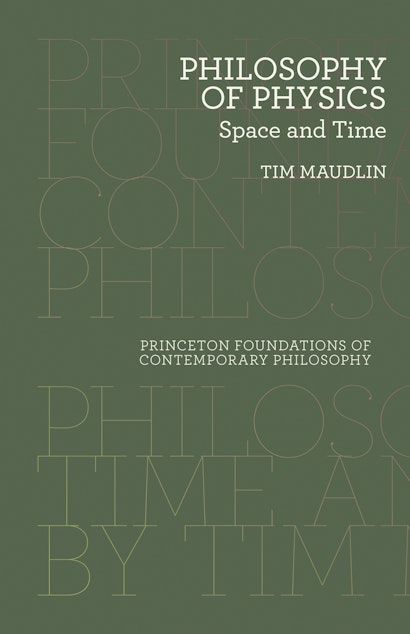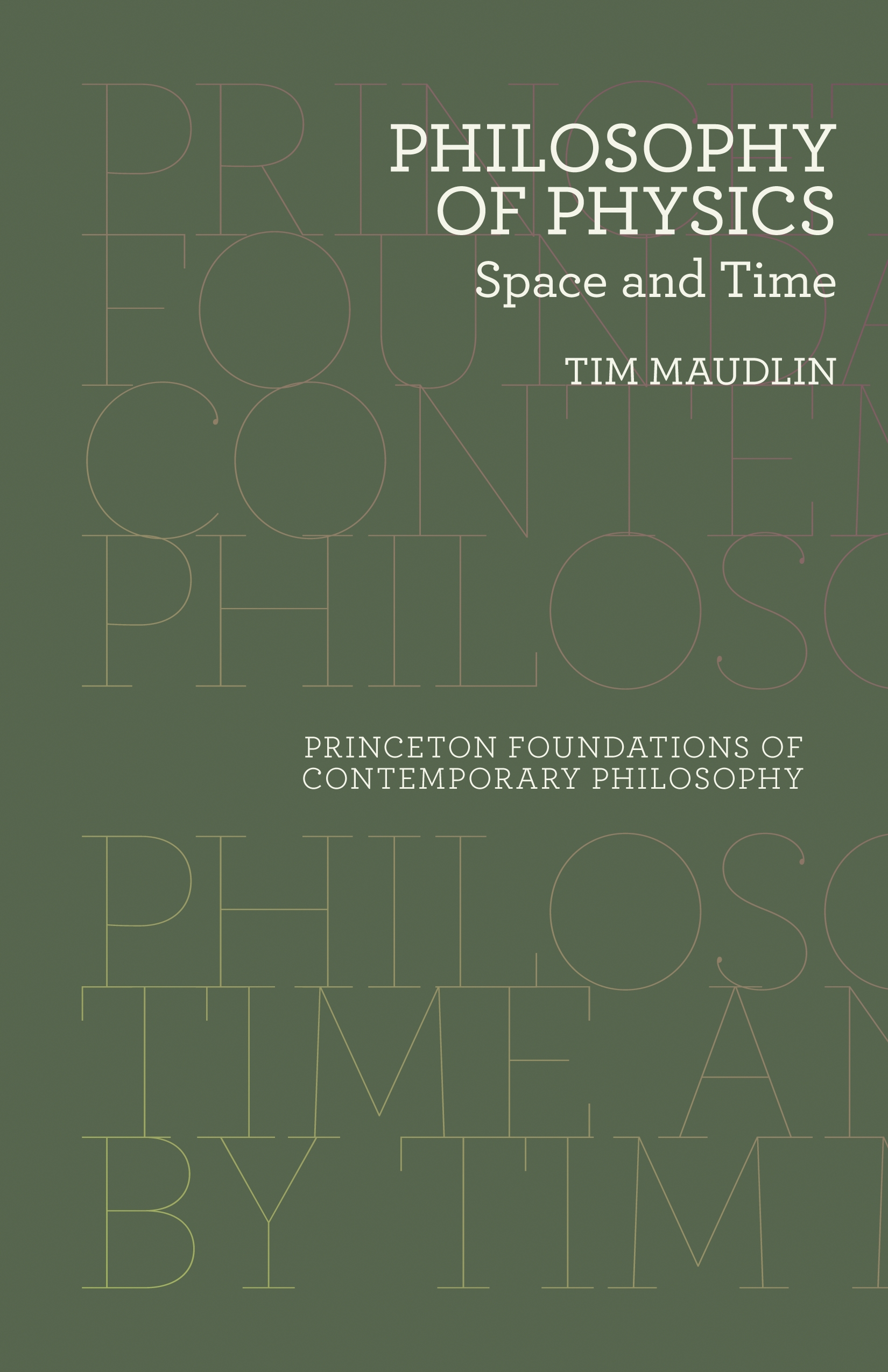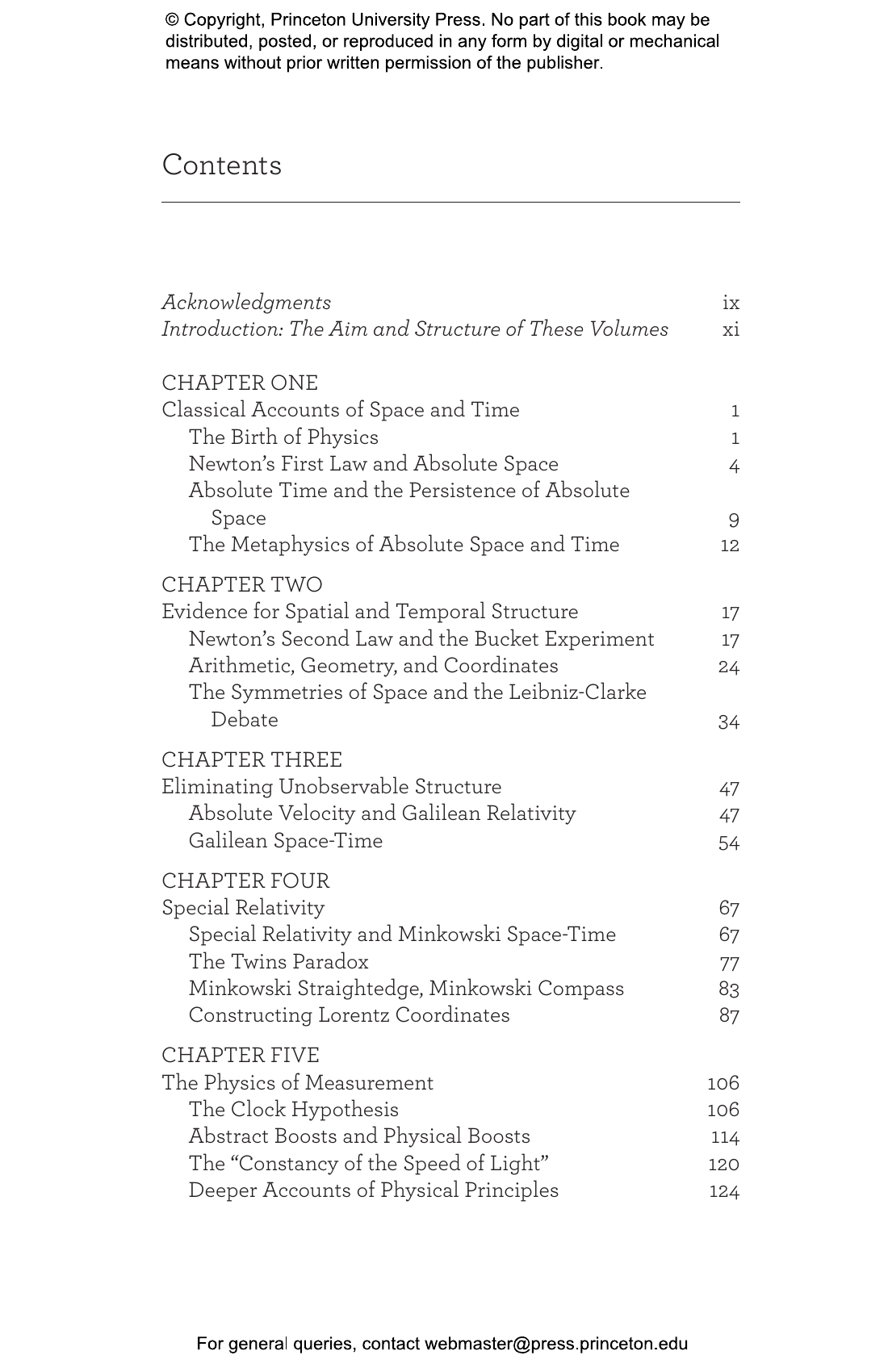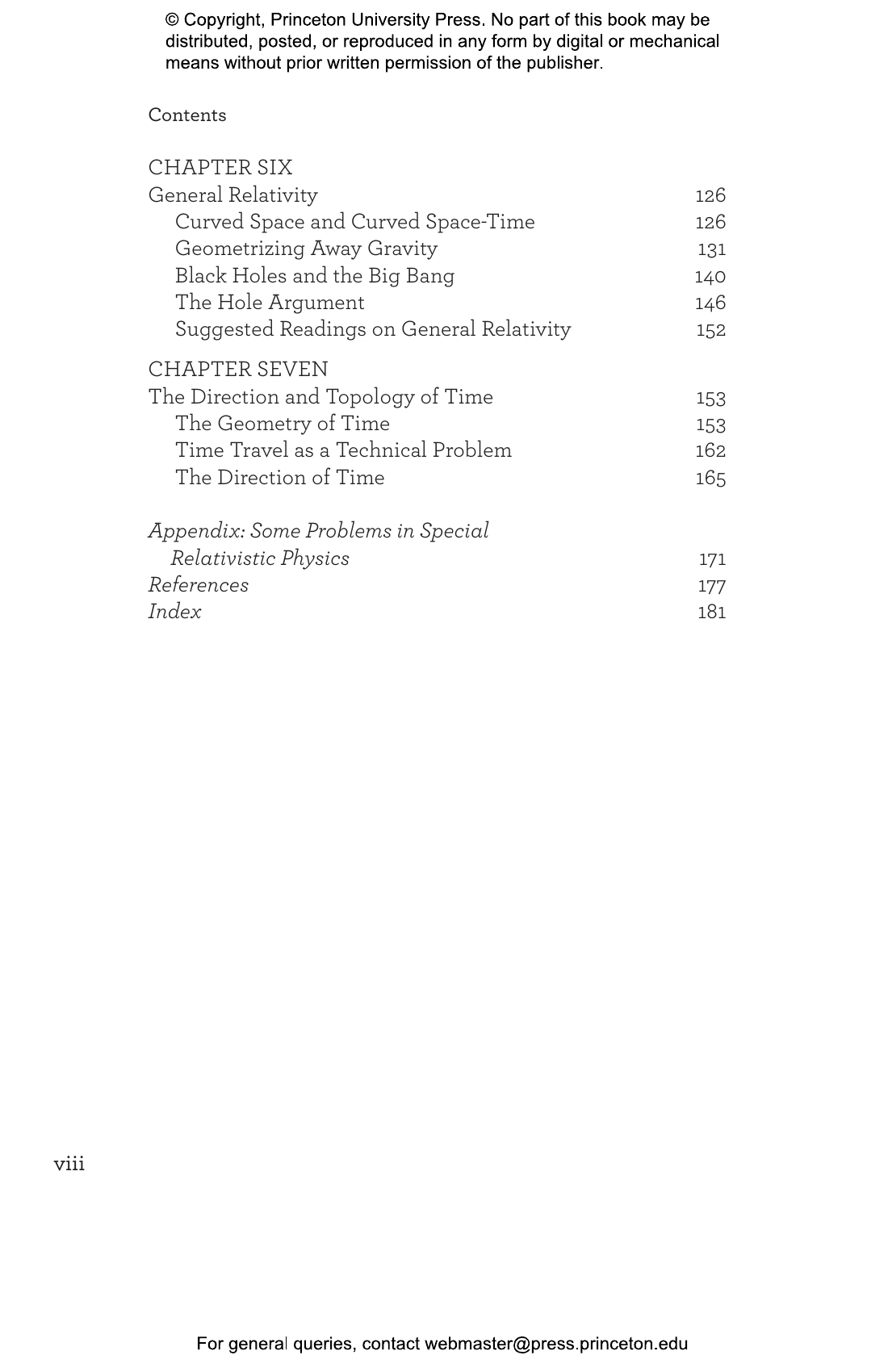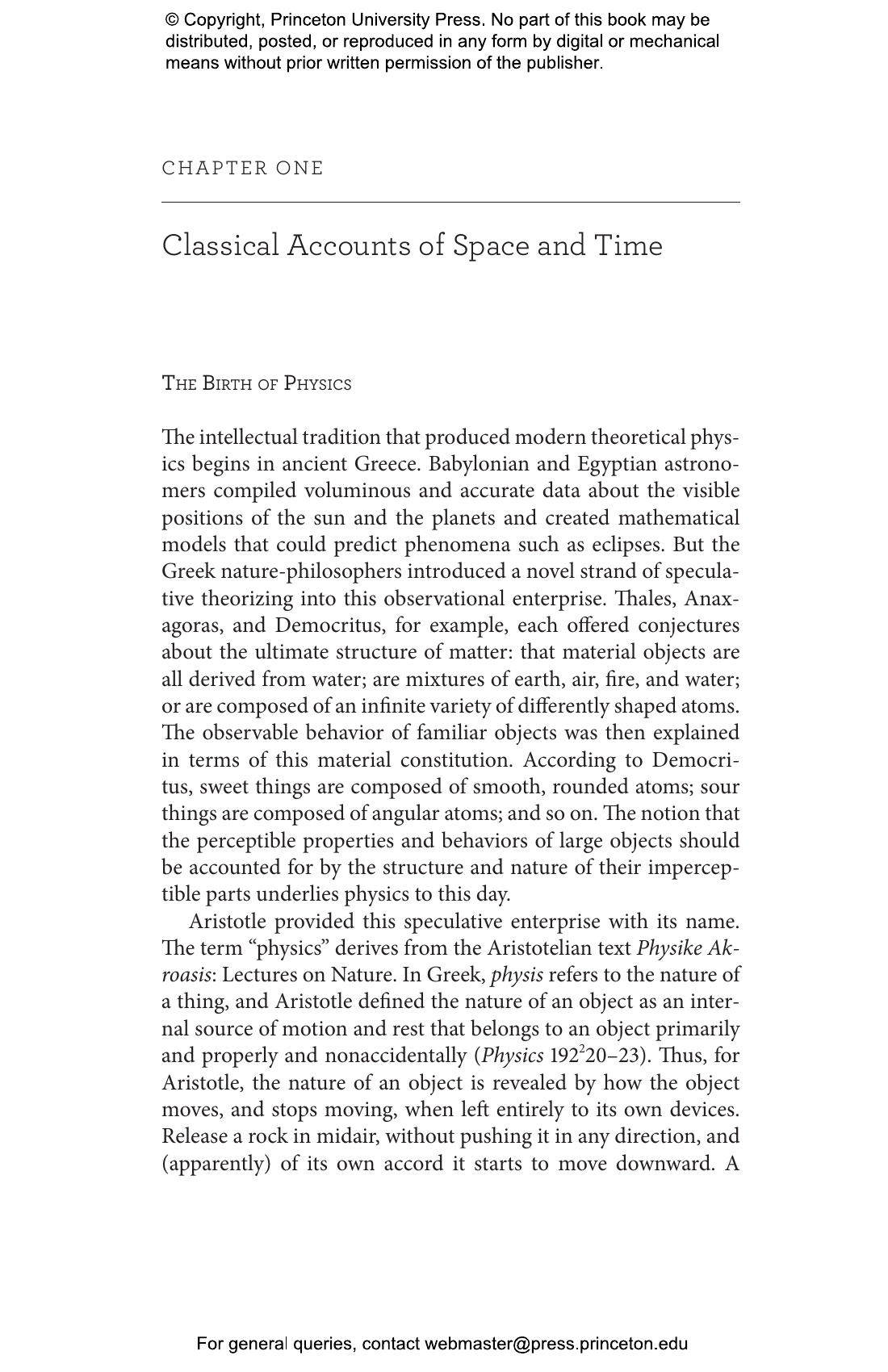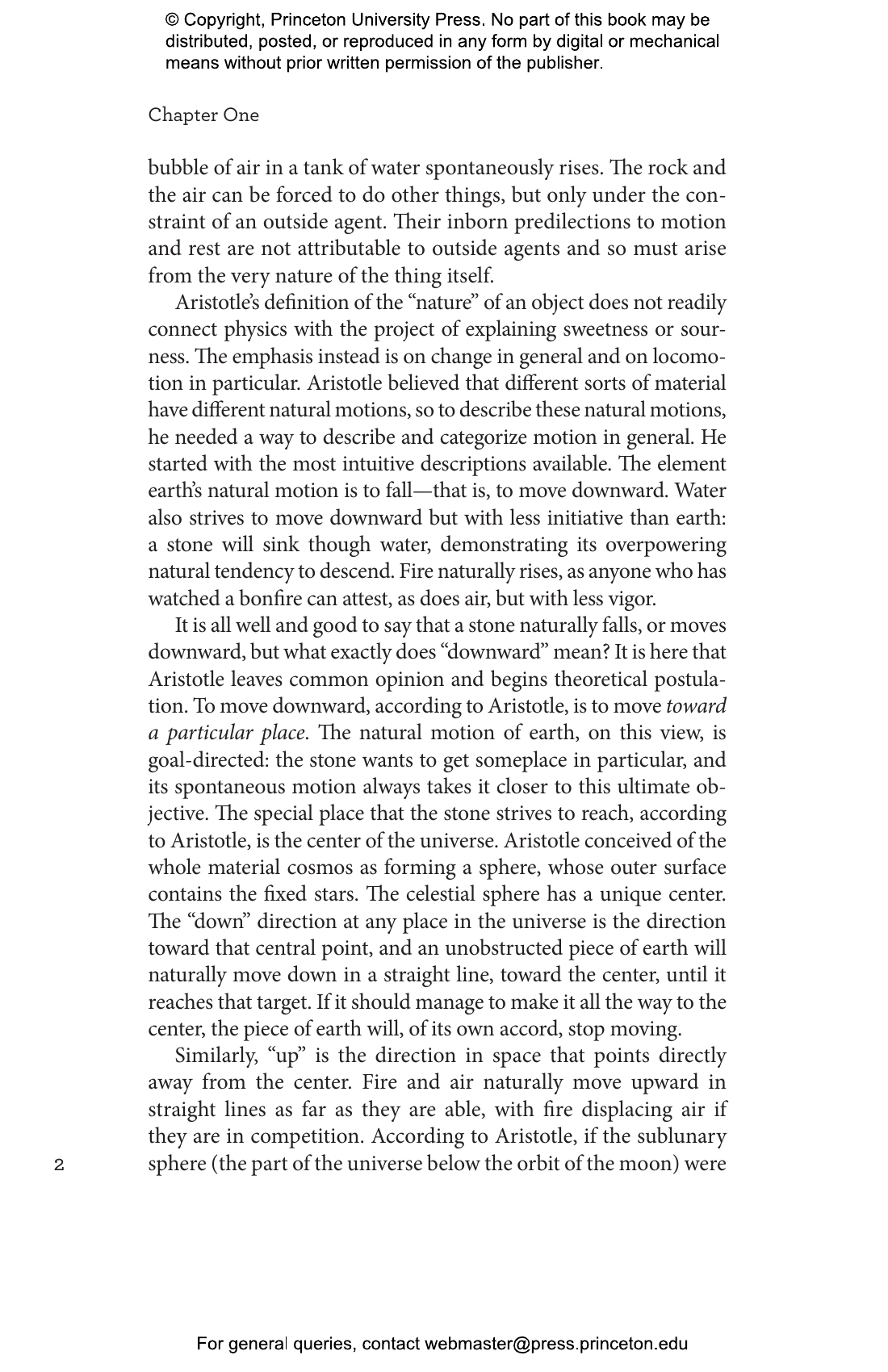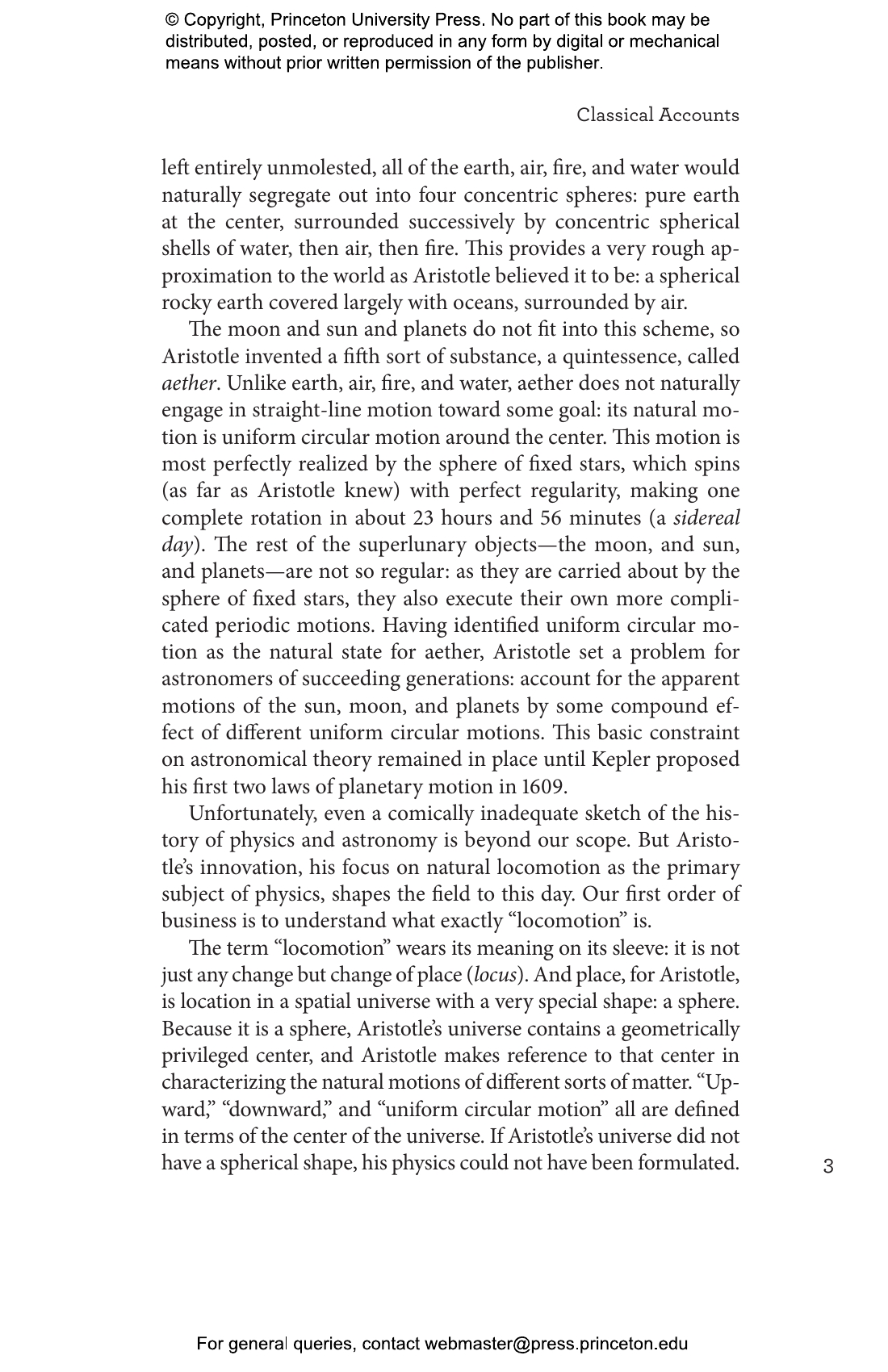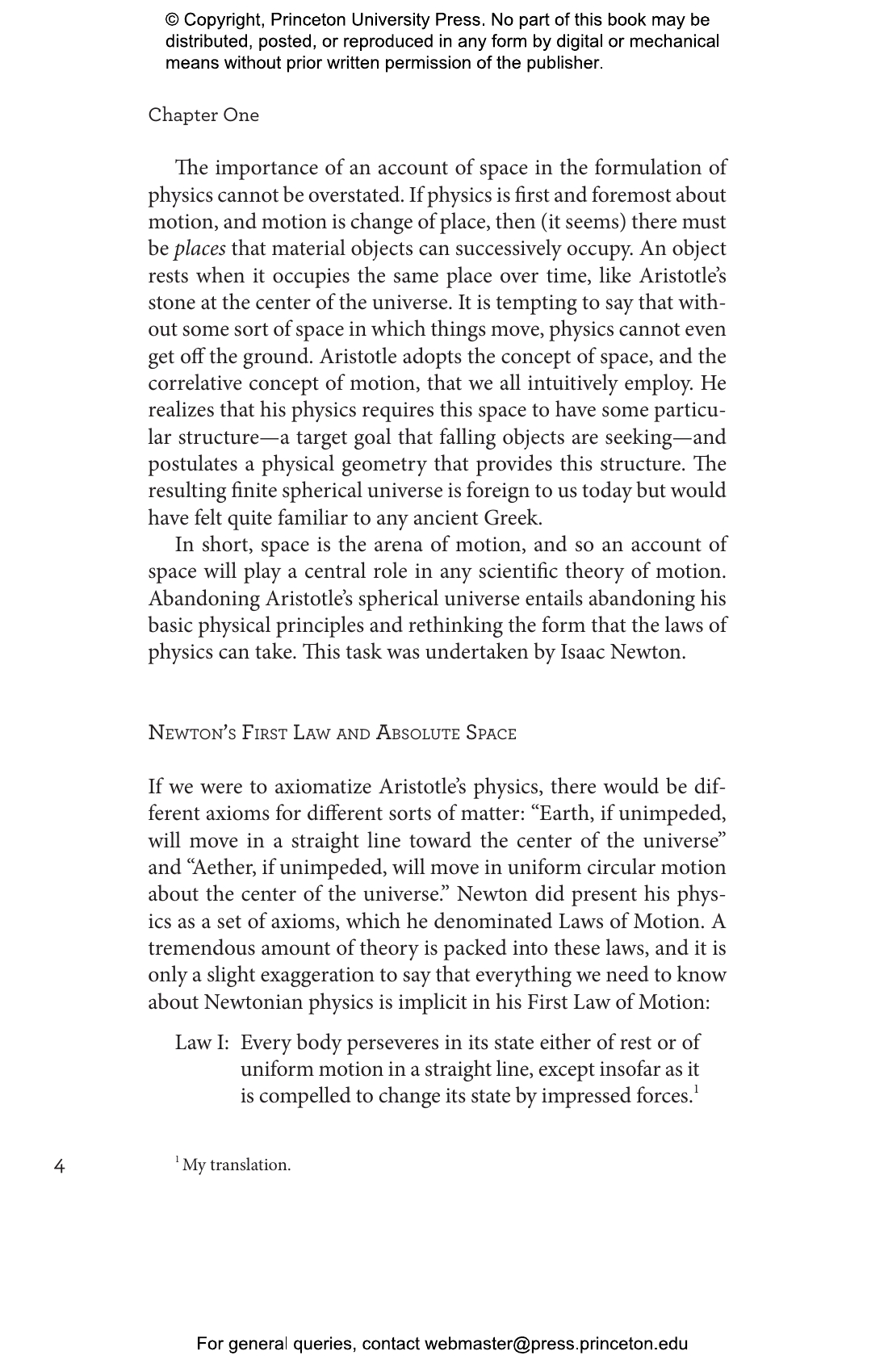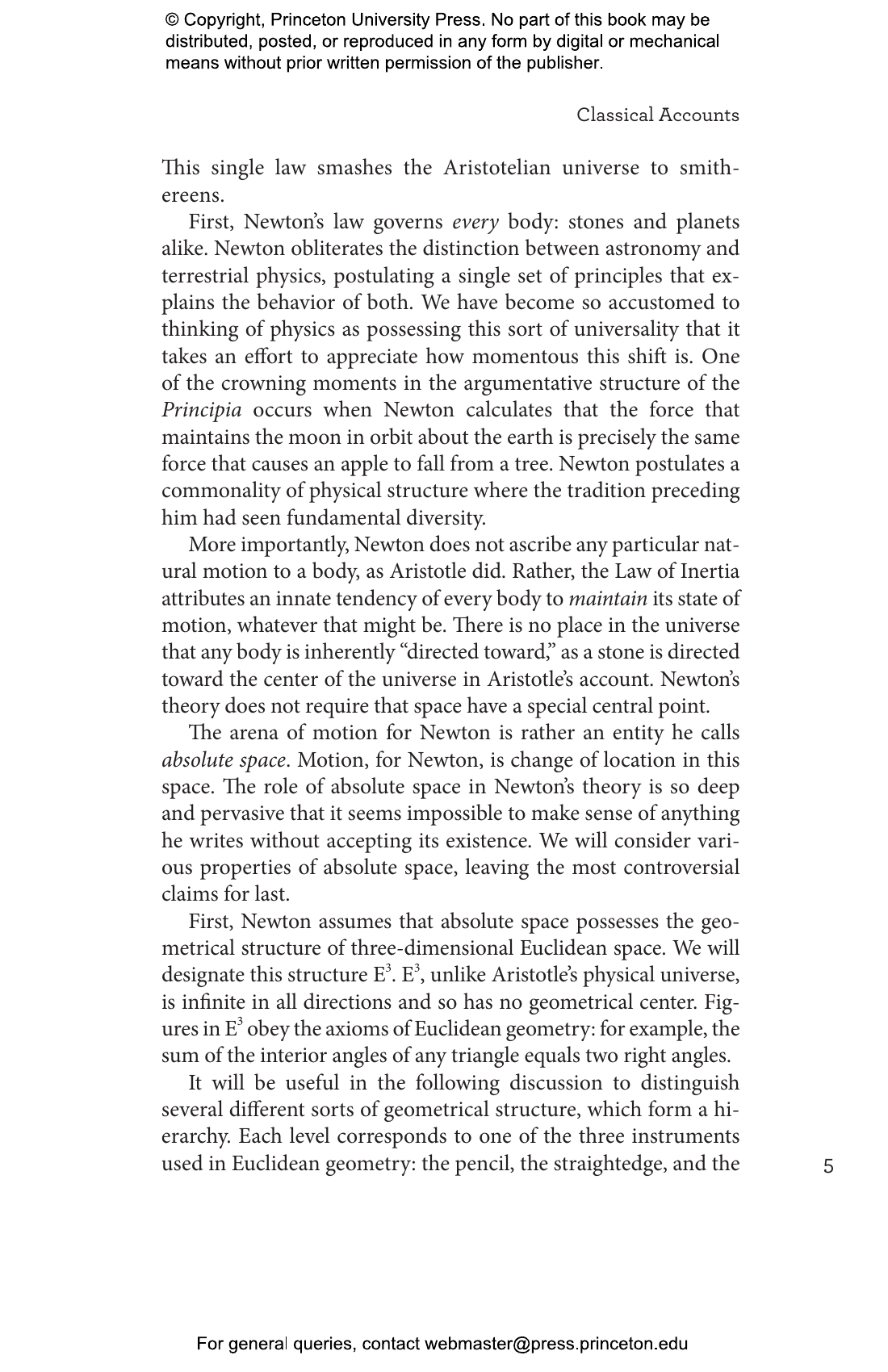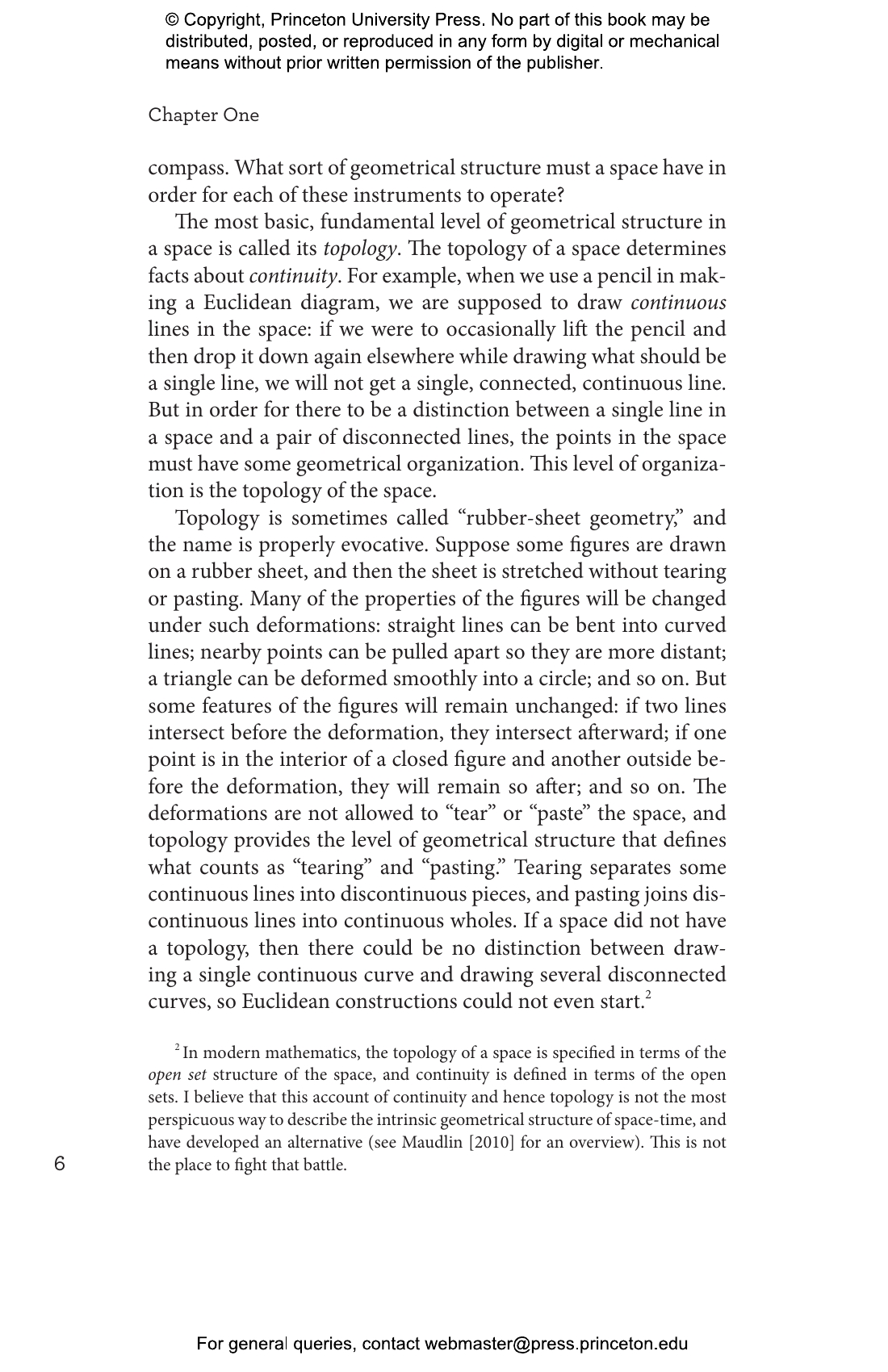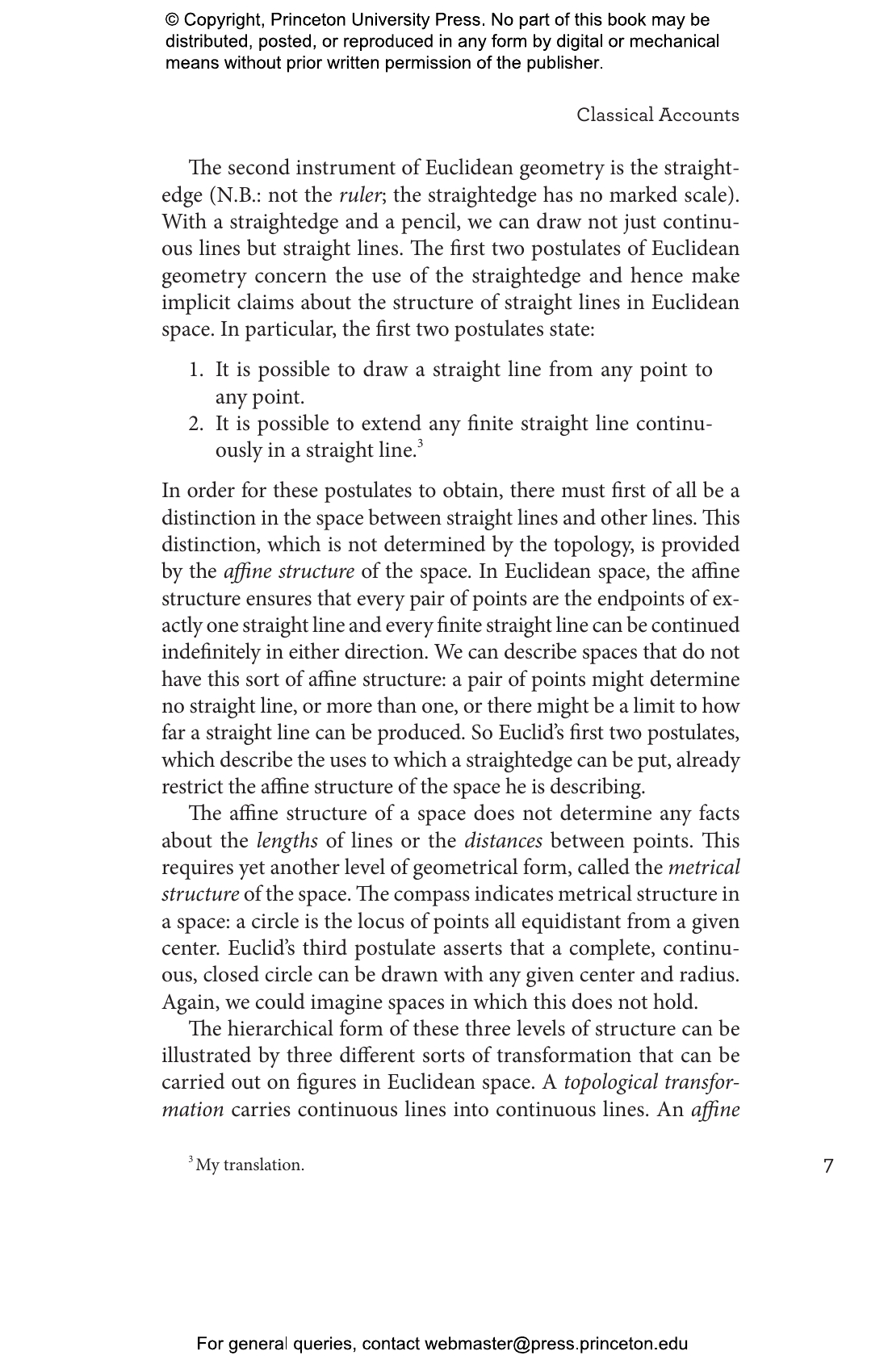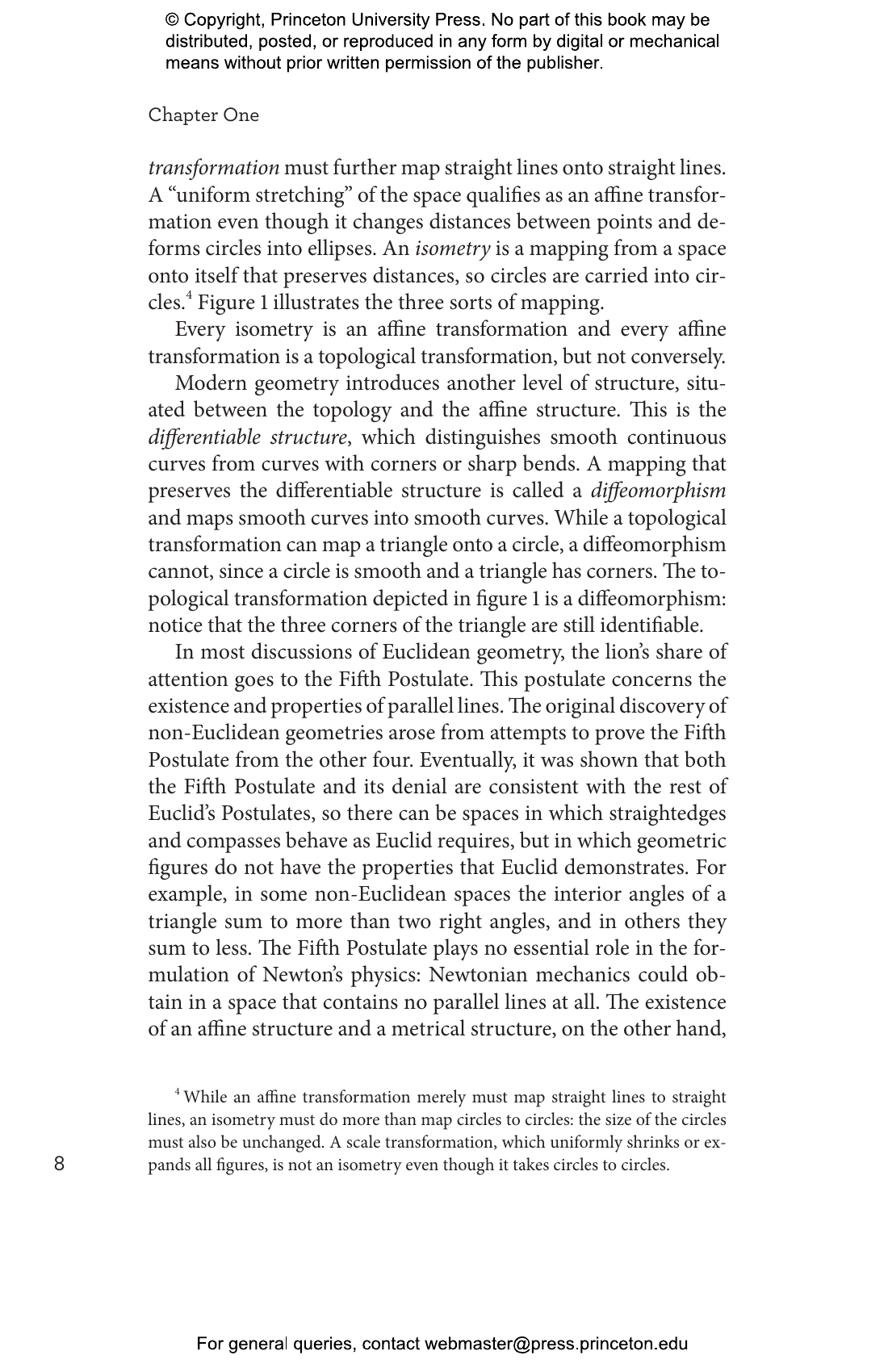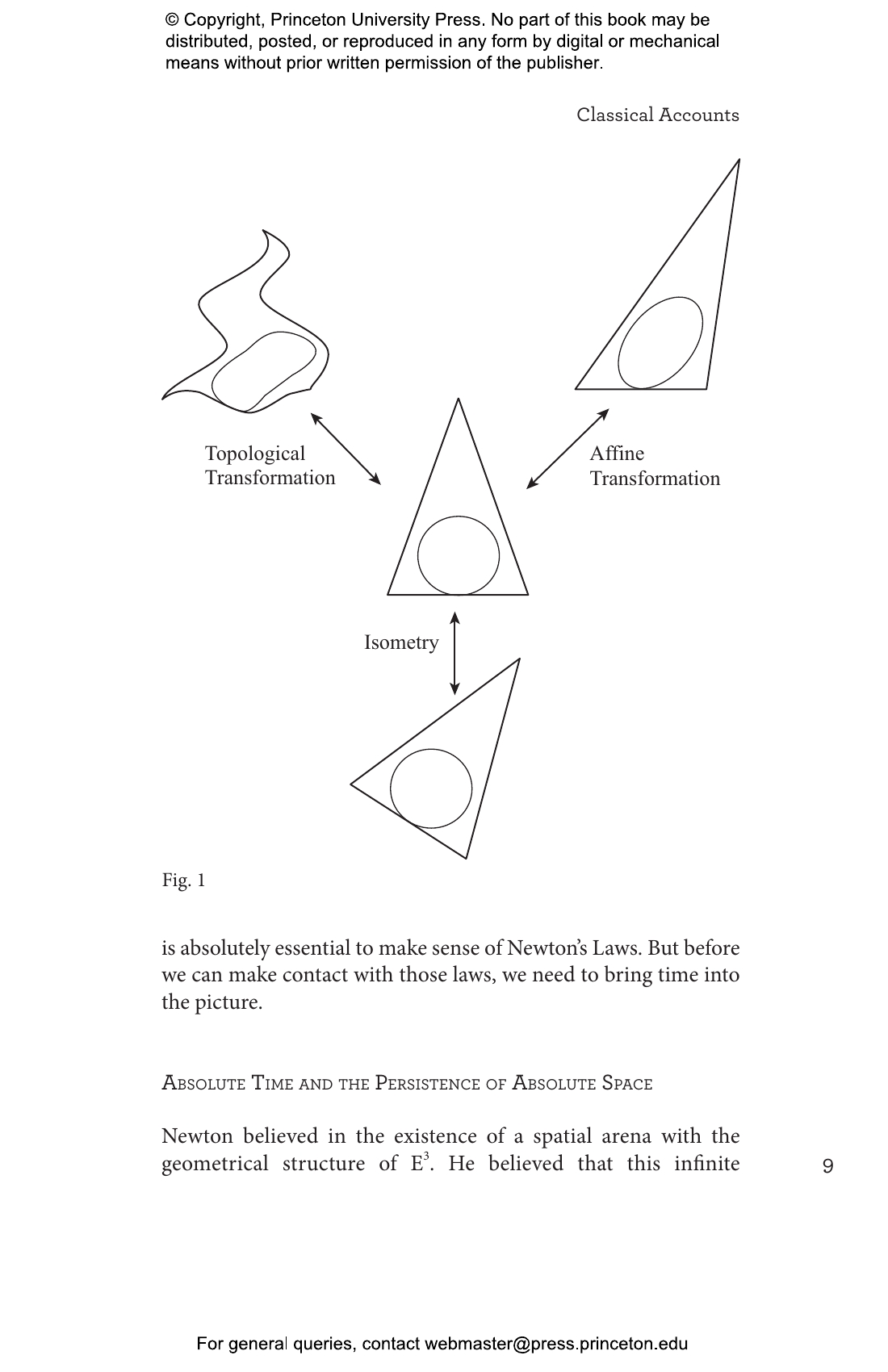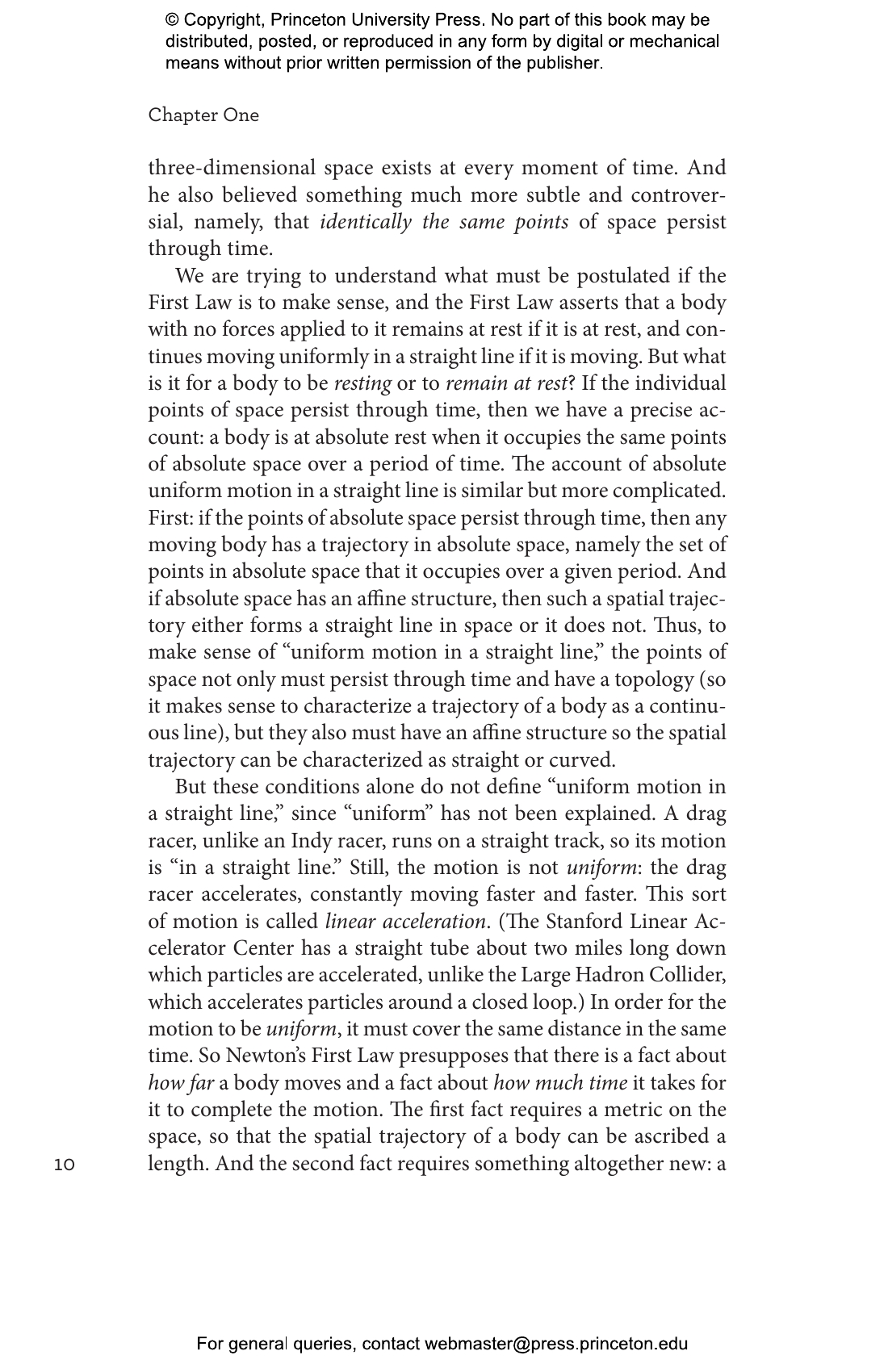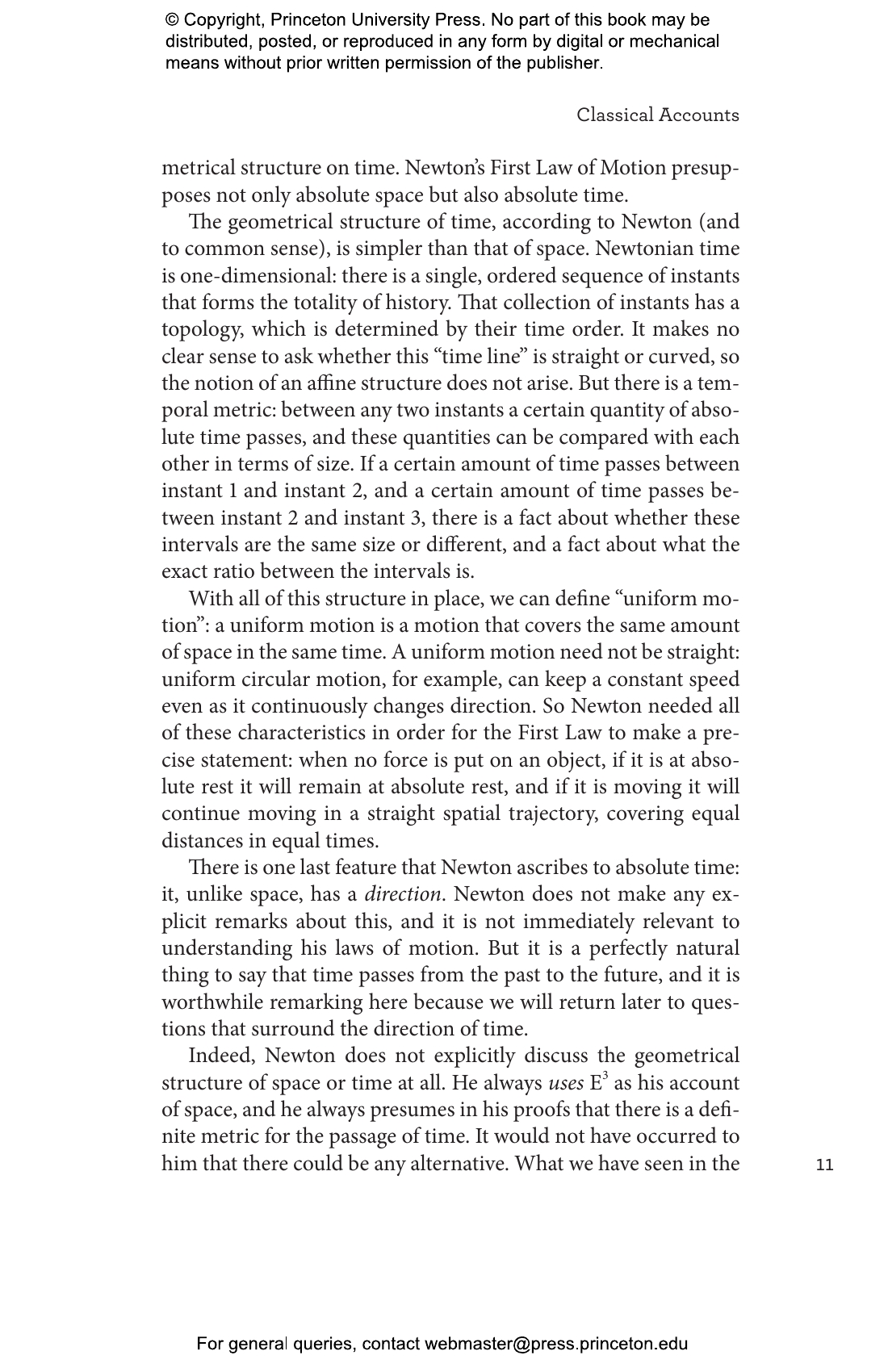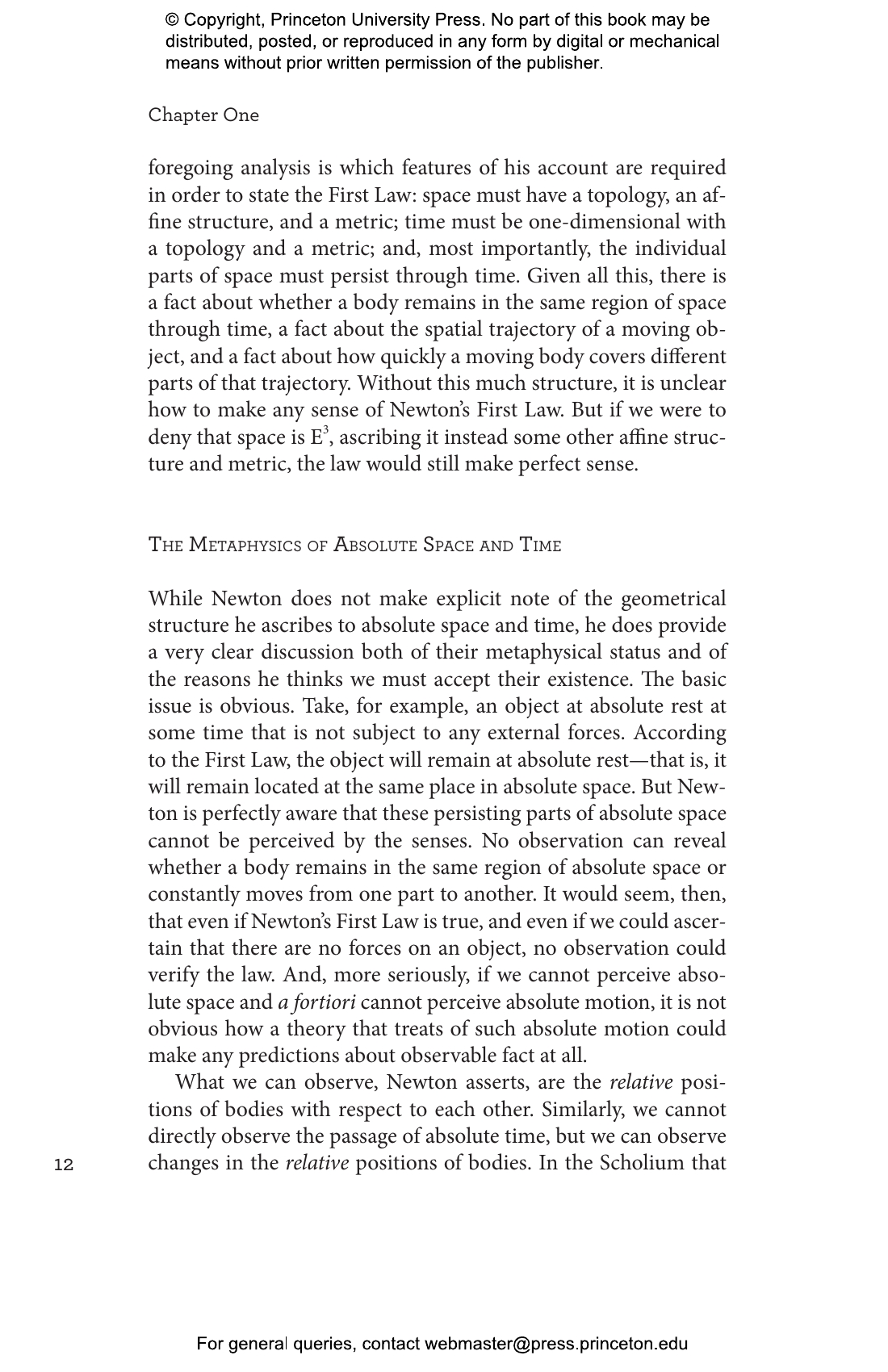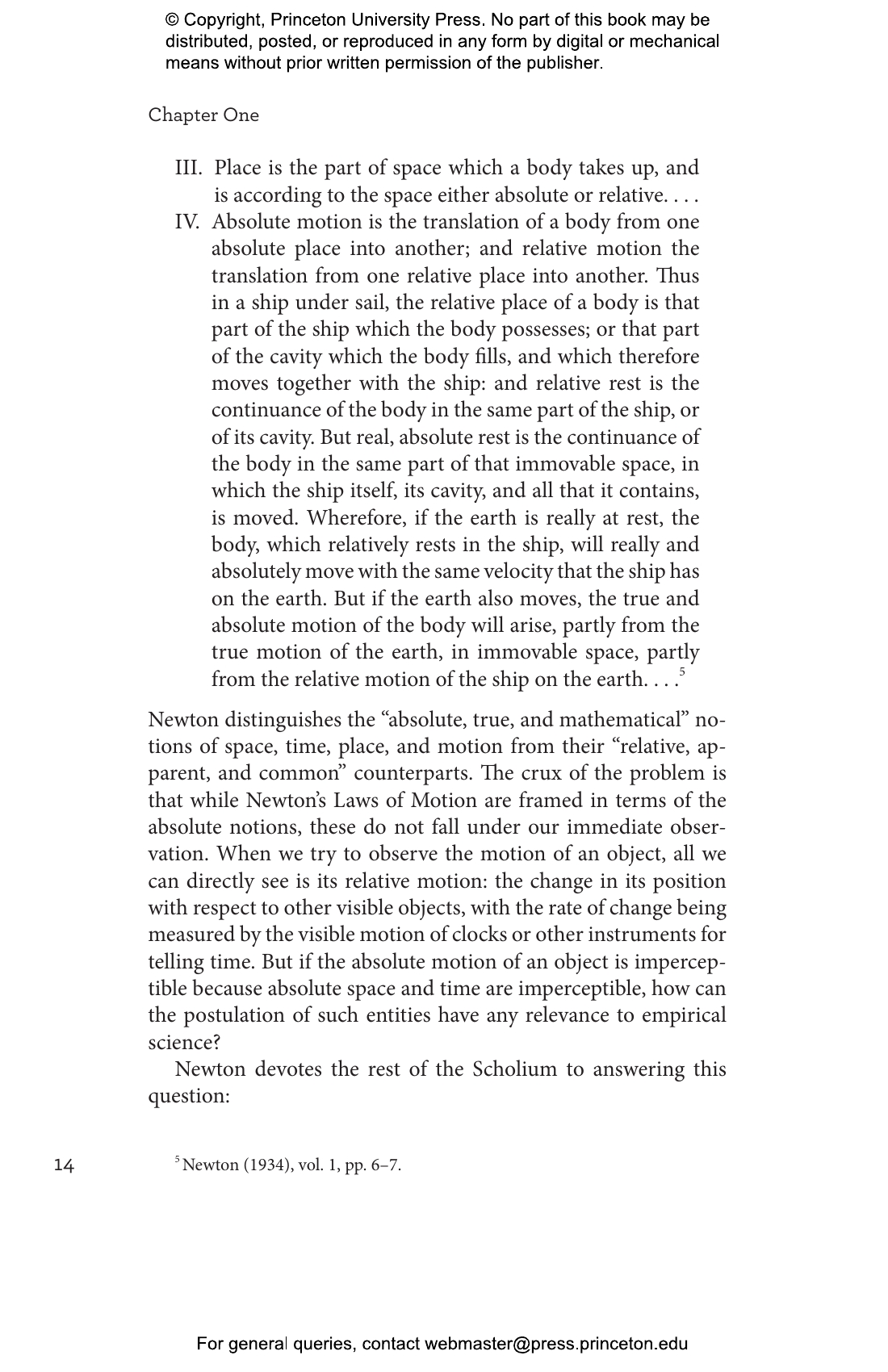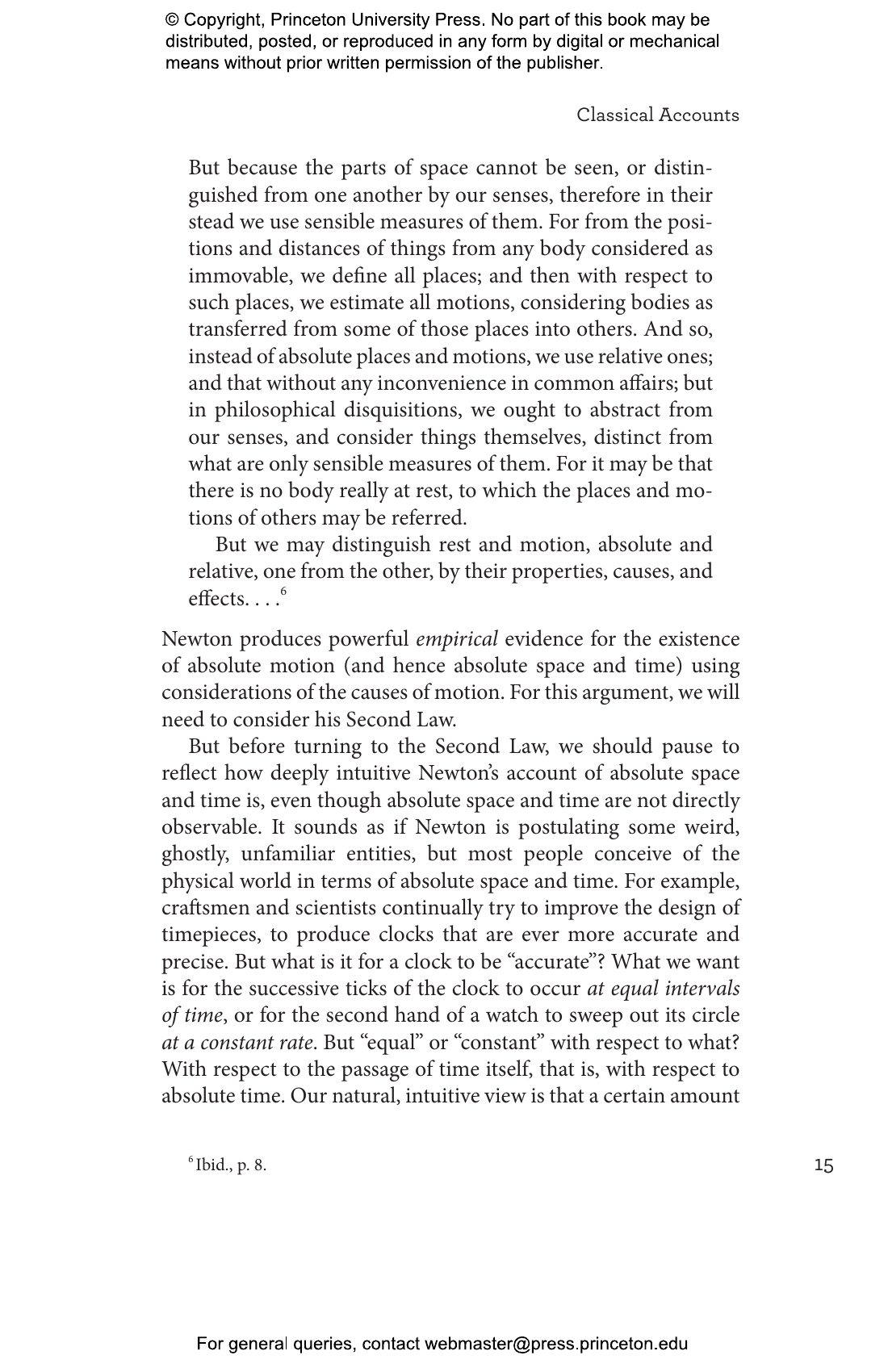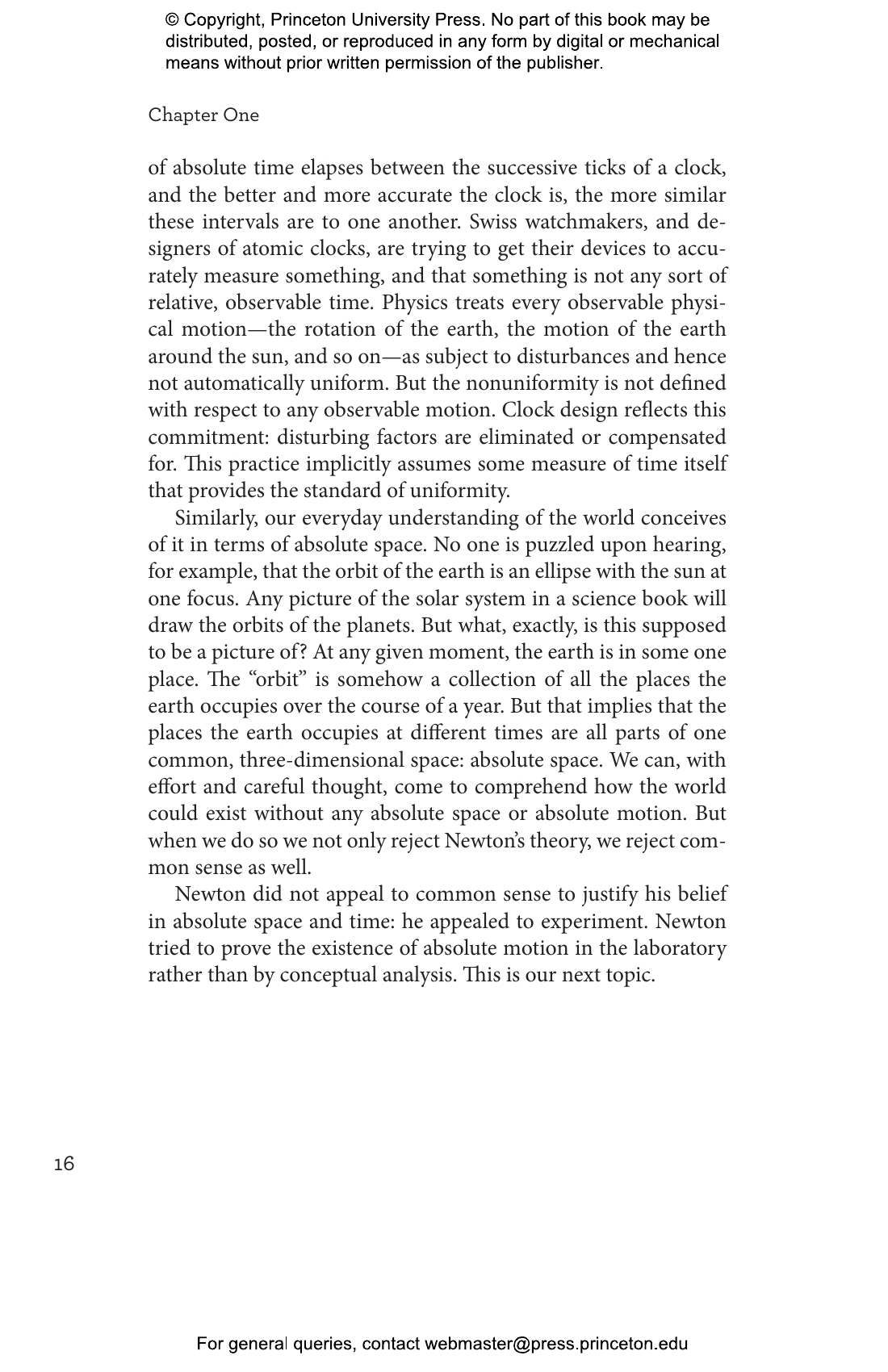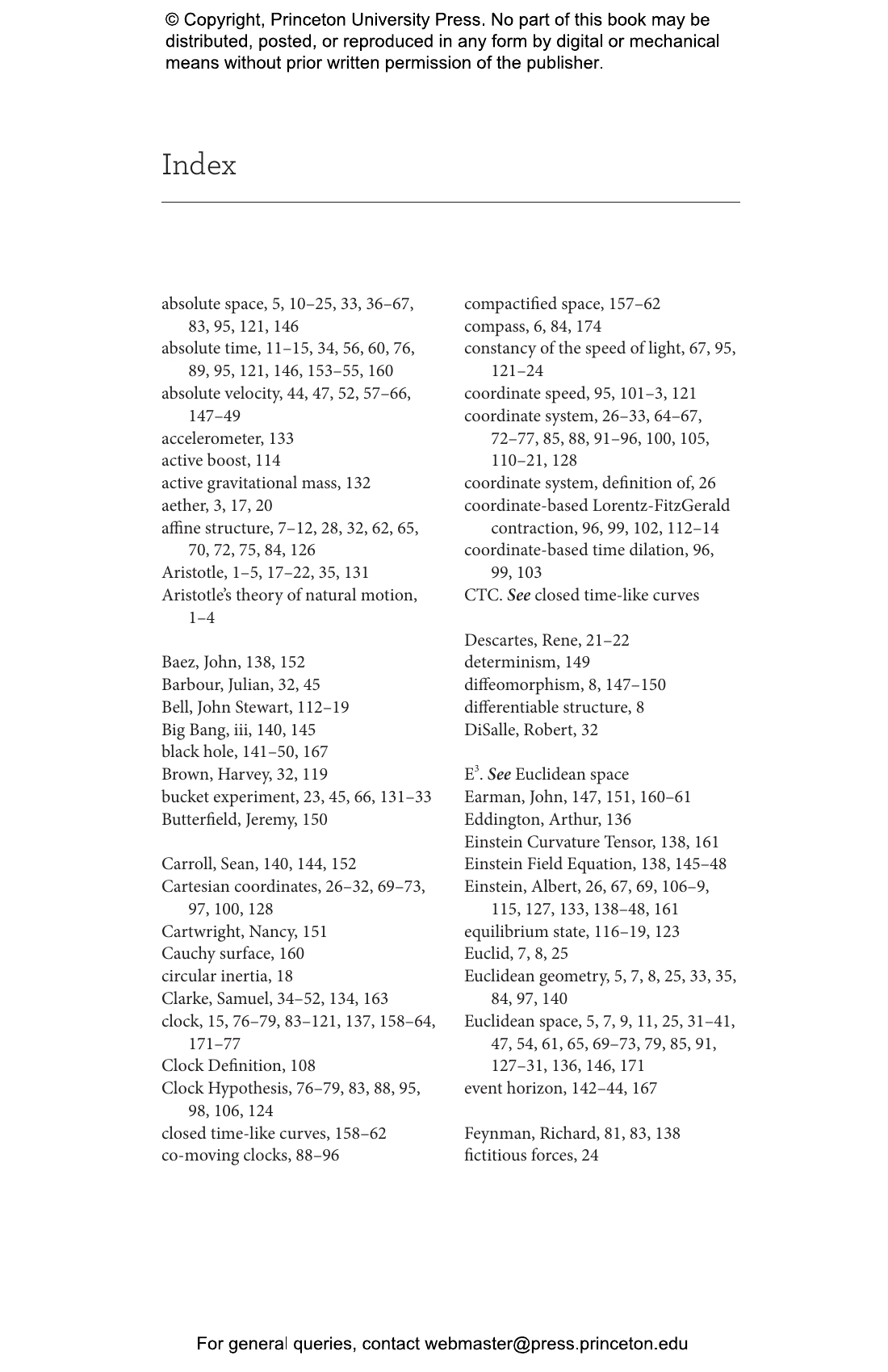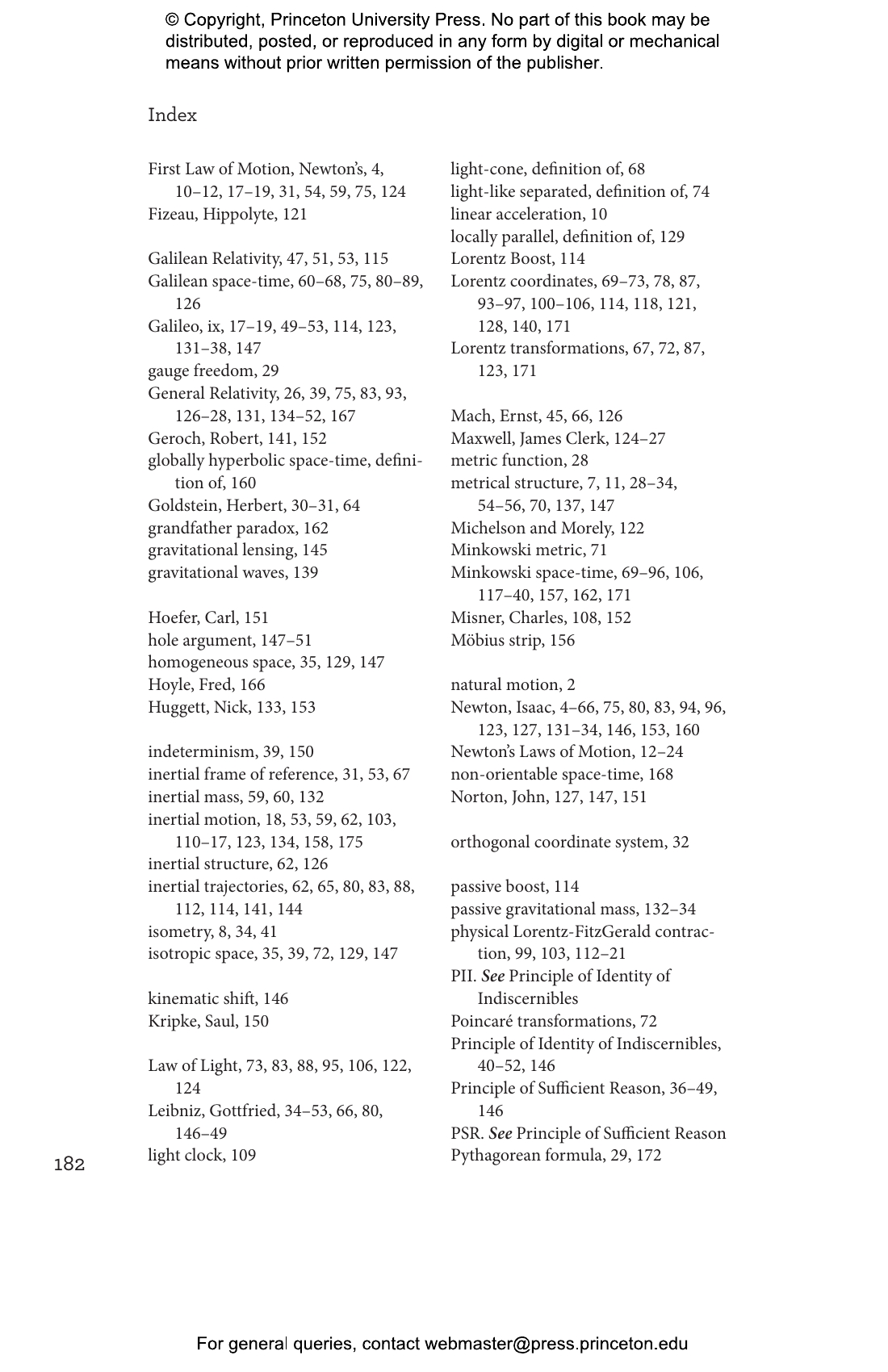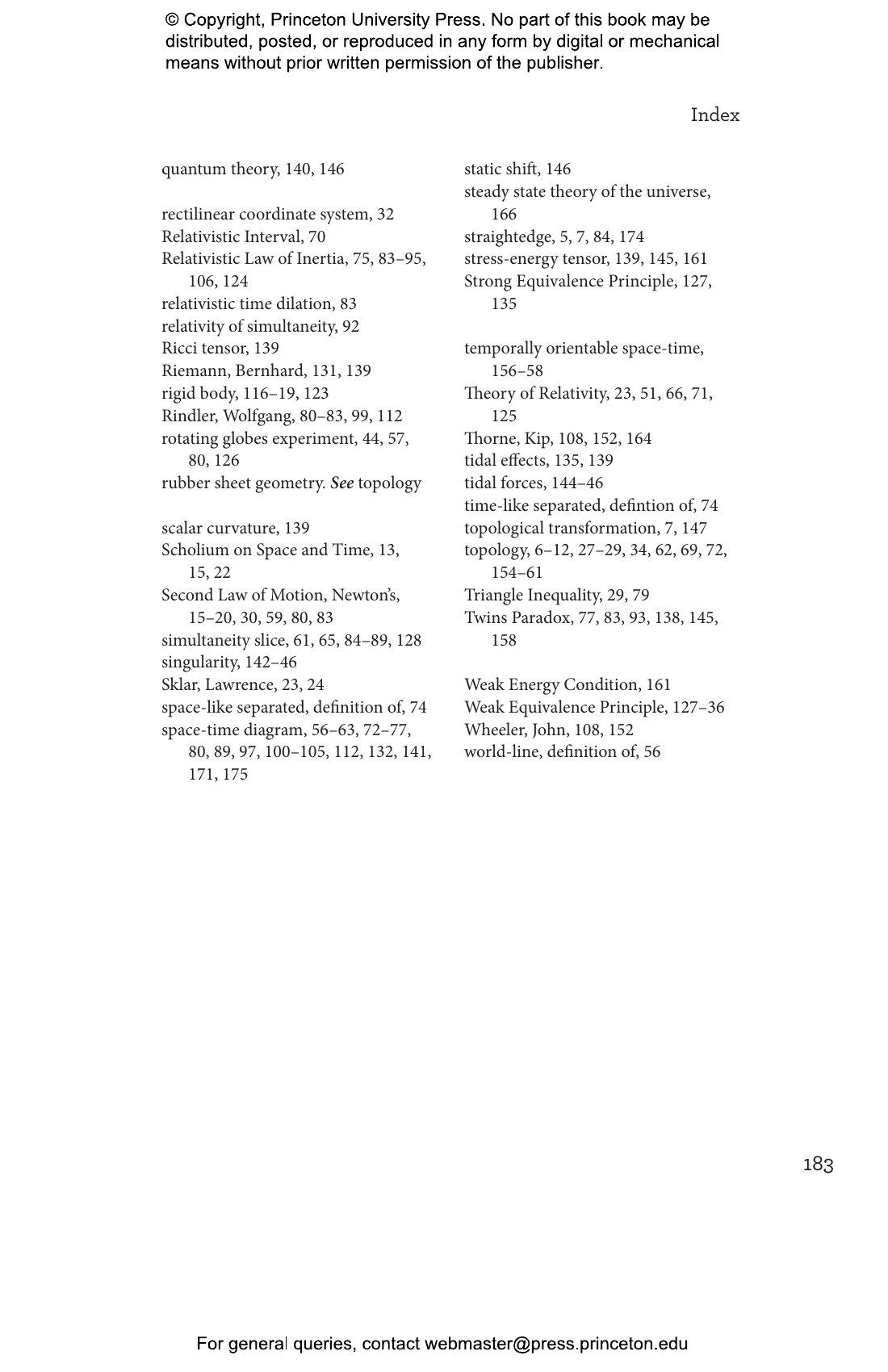This concise book introduces nonphysicists to the core philosophical issues surrounding the nature and structure of space and time, and is also an ideal resource for physicists interested in the conceptual foundations of space-time theory. Tim Maudlin’s broad historical overview examines Aristotelian and Newtonian accounts of space and time, and traces how Galileo’s conceptions of relativity and space-time led to Einstein’s special and general theories of relativity. Maudlin explains special relativity with enough detail to solve concrete physical problems while presenting general relativity in more qualitative terms. Additional topics include the Twins Paradox, the physical aspects of the Lorentz-FitzGerald contraction, the constancy of the speed of light, time travel, the direction of time, and more.
- Introduces nonphysicists to the philosophical foundations of space-time theory
- Provides a broad historical overview, from Aristotle to Einstein
- Explains special relativity geometrically, emphasizing the intrinsic structure of space-time
- Covers the Twins Paradox, Galilean relativity, time travel, and more
- Requires only basic algebra and no formal knowledge of physics
Awards and Recognition
- One of Choice's Outstanding Academic Titles for 2013
Tim Maudlin is professor of philosophy at New York University. His books include The Metaphysics within Physics and Quantum Non-Locality and Relativity.
- Acknowledgments
- Introduction: The Aim and Structure of These Volumes
- CHAPTER ONE
- Classical Accounts of Space and Time
- The Birth of Physics
- Newton’s First Law and Absolute Space
- Absolute Time and the Persistence of Absolute Space
- The Metaphysics of Absolute Space and Time
- CHAPTER TWO
- Evidence for Spatial and Temporal Structure
- Newton’s Second Law and the Bucket Experiment
- Arithmetic, Geometry, and Coordinates
- The Symmetries of Space and the Leibniz-Clarke Debate
- CHAPTER THREE
- Eliminating Unobservable Structure
- Absolute Velocity and Galilean Relativity
- Galilean Space-Time
- CHAPTER FOUR
- Special Relativity
- Special Relativity and Minkowski Space-Time
- The Twins Paradox
- Minkowski Straightedge, Minkowski Compass
- Constructing Lorentz Coordinates
- CHAPTER FIVE
- The Physics of Measurement
- The Clock Hypothesis
- Abstract Boosts and Physical Boosts
- The “Constancy of the Speed of Light”
- Deeper Accounts of Physical Principles
- CHAPTER SIX
- General Relativity
- Curved Space and Curved Space-Time
- Geometrizing Away Gravity
- Black Holes and the Big Bang
- The Hole Argument
- Suggested Readings on General Relativity
- CHAPTER SEVEN
- The Direction and Topology of Time
- The Geometry of Time
- Time Travel as a Technical Problem
- The Direction of Time
- Appendix: Some Problems in Special Relativistic Physics
- References
- Index
"Taking up the conceptual foundations of classical and modern physics, Maudlin explains in a clear manner how Einstein's special and general theories of relativity emerged from Newtonian mechanics and Galilean relativity. . . . This is a solid work that deserves careful study and rewards readers accordingly."—Choice
"I would highly recommend Philosophy of Physics to anyone who wants to get a deeper historical and philosophical perspective on the nature of space and time, as well as to any physics student who has been confused by the twin paradox."—Robert M. Wald, Physics Today
"Maudlin has successfully undertaken a very difficult task: to write a book about the physical theories of space and time, accessible to every learned person with genuine interest in philosophy and the foundations of physics, with little mathematical prerequisites but without betraying the physical theories. We are really anxious to read the second volume of his work."—Chrysovalantis Stergiou, Metascience
"An accessible and highly engaging introduction to the major issues in the physics of space and time."—Matt Farr, Philosophy in Review
"Exceptionally clear and comprehensive, this engrossing volume will be extremely useful to students. Most introductions to space-time and relativity are written by physicists, but readers interested in a careful examination of the philosophical foundations of the subject are much better served by starting here. I had fun reading this book."—Sean Carroll, author of From Eternity to Here: The Quest for the Ultimate Theory of Time
"Maudlin adroitly guides readers through the mathematical, physical, and philosophical subtleties of Newtonian physics and special and general relativity. The book is filled with lucid and original observations, and succeeds in presenting material that was previously only accessible to those who could stomach significant amounts of differential geometry. A major contribution."—David Wallace, University of Oxford
